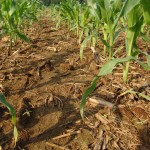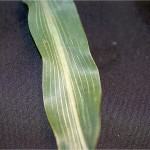
It is apparent in a number of corn fields that the Pre applied herbicide has given out. In fields where the weed control is relying completely on a Pre applied herbicide, weeds, particularly Palmer amaranth, are emerging. Continue reading


It is apparent in a number of corn fields that the Pre applied herbicide has given out. In fields where the weed control is relying completely on a Pre applied herbicide, weeds, particularly Palmer amaranth, are emerging. Continue reading
As reported by NASS on May 23, 2011
SOYBEAN PLANTING BEGINS IN EARNEST, CORN PLANTING STILL UNDERWAY
For most of last week, inclement weather stayed out of the way and allowed Tennessee farmers to plant. Crop producers were able to follow up with another productive week. Nearly half of the state’s cotton acreage and one-fourth of the soybean acreage were planted by week’s end. With the exception of low-lying fields affected by earlier flooding, most of Tennessee’s corn for grain acreage has been planted and row crop farmers have turned their attention to planting single-crop soybeans and corn silage. Continue reading


The call of the week has been concerns on the herbicide fomesafen (Flexstar, Reflex). A few farmers believe (and some are correct) that they have Flexstar carryover stunting corn. There is a 10 month wait to plant corn after a Flexstar application just for carryover reasons. If Flexstar is applied after mid-June and is coupled with a dry fall there is a chance for carryover. Corn suffering from Flexstar carryover will display very distinctive leaf symptoms. The corn leaf veins will turn yellow to brown and the midrib will often become distinctly yellowish/brown while the tissue between the veins Continue reading
As reported by NASS on May 16, 2011
LAPSE IN RAIN SETS OFF MOST PRODUCTIVE FARM WEEK OF THE SEASON
Dry weather early last week triggered a big round of productive fieldwork for Tennessee producers. The vast majority of the state had not seen 4 consecutive days of dry weather since early April. In areas where flood waters receded and fields had dried, farmers were busy planting field crops and cutting hay. Continue reading
We have seen a major flush of grasses and Palmer pigweed in many of the early planted corn fields. A follow-up herbicide application will be necessary in these cases. Continue reading
I’ve received a few calls about sugarcane beetles damaging corn. I will refer you to a previous article posted on April 5th (link below). There were images of the beetles and their injury in this article.
http://www.utcrops.com/news/2011/04/managing-for-sugarcane-beetles-in-corn/ Continue reading
As reported by NASS on May 9, 2011
STORMS AND FLOODING CONTINUE TO SIGNIFICANTLY DELAY PLANTING
Farmers in East Tennessee were busy assessing storm damage last week as farmers in other areas braced for the effects of widespread flooding. Several acres of wheat were in standing water by week’s end. Departures from normal rainfall totals have reached double-digit levels for most areas of West Tennessee. Corn planting is three weeks behind average. Continue reading